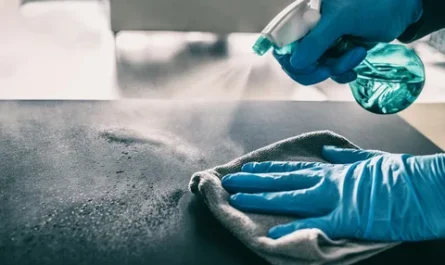Methyl Methacrylate: A Persistent Chemical in Daily Life
Introduction
Methyl methacrylate (MMA), also known as methyl 2-methylprop-2-enoate or methacrylic acid methyl ester, is an organic compound that has become a common element in our daily lives. While it is used to manufacture many useful products, MMA continues to pose environmental and health concerns due to its hazardous properties. This article explores the diverse uses of MMA in industry and consumer goods and examines its impacts and the ongoing efforts towards safer alternatives.
Uses of MMA in Various Industries
Plastics Manufacturing
The largest use of Methyl Methacrylate is in the production of acrylic glass and plastics. Over 6 million tons of MMA are polymerized annually to manufacture poly(methyl methacrylate) (PMMA), more commonly known as acrylic glass. PMMA is valued for its clarity, strength, and lightweight properties. It is a major component of items like vehicle lights, signage, aquariums, glazing, and aircraft canopies. MMA is also polymerized with other compounds to produce hard transparent plastics used for items like Plexiglas sheets, Lucite jewelry, and acrylic paints.
Coatings and Adhesives
MMA finds extensive application as a monomer in various coatings and adhesive formulations. It is a chief ingredient in acrylic and polyurethane automotive paints due to its durability and glossiness. Millions of gallons of these paints are utilized each year by the automotive industry. MMA is also present in other industrial and architectural coatings, as well as adhesives employed to join composites, metal, and plastic substrates.
Consumption in Consumer Goods
Nail Enhancers
An increasingly popular use of MMA is as a main component of liquid and powder monomers used in UV/LED gels for artificial nail extensions and enhancements. The global nail art market has grown rapidly in recent years, resulting in higher MMA usage. While these products have benefits, concerns persist regarding dermal absorption during application and removal.
DIY/Craft Materials
MMA can also be found in DIY molding and casting kits, plastic cement glues, and acrylic paints available at hobby and craft stores. While intended for minor projects, the inhalation risks from these consumer-oriented MMA products warrant attention, especially for frequent or improper use.
Health and Environmental Impacts
Toxic Hazards
MMA is a volatile liquid monomer that poses acute and long-term health risks when inhaled or absorbed through the skin. Short-term overexposure to high concentrations can cause eye, nose and throat irritation along with headaches, dizziness and nausea. Prolonged or repetitive exposure may lead to more severe issues involving the central nervous system and reproductive organs.
MMA has been classified as a possible human carcinogen by various regulatory agencies based on animal studies. It is also highly flammable and can release toxic fumes when burned. While polymerized, products like PMMA and nail gels are generally inert, concerns remain regarding MMA residue and hazards during manufacturing, application, and disposal.
Emissions and Regulations
As a high production volume chemical, MMA emissions can occur throughout its lifecycle from factories and industrial uses into the air, water and soil. Regulatory efforts aim to minimize workplace and environmental releases through strict controls on air pollution and wastewater from manufacturing plants. However, emissions associated withsmaller industrial operations and widespread use ofconsumer products with MMA remain difficult to monitor and regulate effectively.
Alternative Research
Scientists continue exploring safer alternativemonomers and emerging technologies that can replace MMA in various applications without compromising product performance.Water-based latexes and powder coating technologies employ little to no volatile organic compounds. Some study highlights advancements inbio-based monomers from natural materials as well assupercritical carbon dioxide polymerization methods. While progressing, widespread MMA replacement will require significant time and resources across global industries.
Conclusion
In summary, MMA has become an integral monomer in the production of plastics, resins, paints and other materials due to its beneficial properties. However, concerns about potential health impacts and environmental emissions have accompanied its prevalent use. Regulators aim to minimize risks through strict controls on large-scale manufacturing. Meanwhile, research progresses on developing practical and commercially viable alternatives that can eliminate MMA from formulas over the long run. As new technologies emerge, a balanced approach is needed to ensure both public well-being and economic growth.
*Note:
1. Source: Coherent Market Insights, Public sources, Desk research
2. We have leveraged AI tools to mine information and compile it



